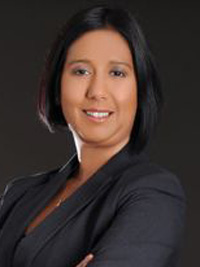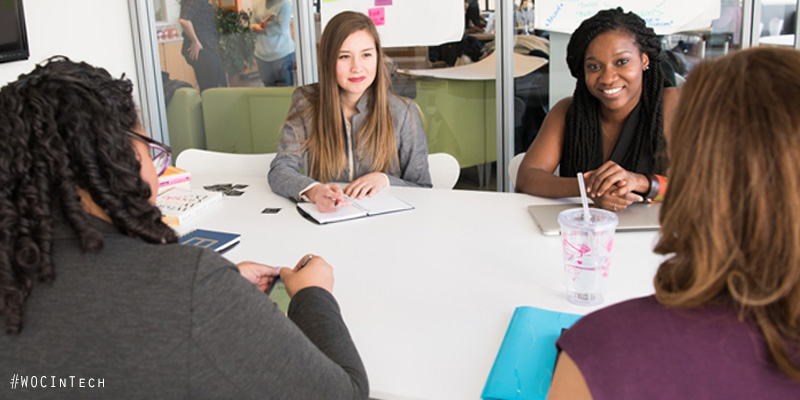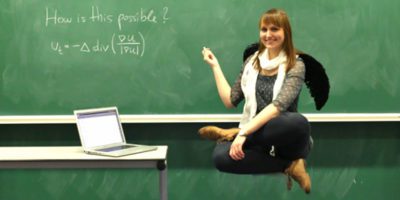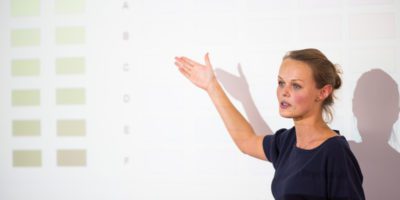Sayara Beg is founder and chief executive of Datanut Sciences, a boutique data science consultancy focusing on advanced analytics, business intelligence, data warehousing, data science and data governance. Her role involves managing client relationships and project teams to ensure they run efficiently, as well as conducting statistical analysis herself. Sayara is a Fellow of the Operational Research Society, member of the Institute of Engineering and Technology and a member of the International Association of Privacy Professionals.

“…the system and the rules were designed by men for men, so it is no surprise that women are not succeeding by following them to the letter…”
A career combining maths and computers
I always enjoyed practical mathematics, especially physics and statistics, so when I was introduced to operational research everything I learnt felt very natural to me. Maths always made sense to me. I was fortunate to have a really good maths teacher during my formative years and both my parents were mathematically minded so they were constantly interested in my maths homework, getting involved.
Looking back these two contributory factors made a huge impact in my final decision to pursue a maths career but it was the introduction to information systems later on that really turned my career around, where I learnt to programme computers to categorise and analyse data. Then my career combining maths with computers really took off.
Founding Datanut Sciences
I founded Datanut Sciences to represent my two areas of expertise. My knowledge of data and its use for analytics and the science that goes into understanding data structures. As the founder of Datanut Sciences, my role is focused on relationship building.
Datanut has a large number of associates that I managed and we often come together to work on consultancy assignments. The associates are individual experts who have very specialist skills. Depending on the client requirements, we can form a specialist skilled team to manage and deliver on an assignment. So, I spend a lot of my time, networking with the associates and keeping myself up to date with their skills and expertise, so I know who to call upon when a particular assignment requires a specialist team.
Identifying and categorising data types
To help you understand why data is such a hot topic, I would you take you back to basic mathematics. When you learn to count, you don’t always think about what you are counting, just that you need to add, subtract, multiply and divide. Having mastered those simple basics you then start to think about what it is you are counting. This is when algebra kicks in, when you have to distinguish between the ‘x’ and ‘y’ in order to make sure you count them separately.
Although the term ‘data’ is commonly used, it is actually breaks down into many different types of data and each data type needs to be treated differently, mathematically speaking. I spend a lot of time identifying the different data types, and categorising the data types, so that when they are analysed by computer programmes, different mathematical rules are applied depending on the data type and data category. Applying the wrong mathematical rule to a data type can significantly impact the results of any mathematical computed algorithm.
Developing a Data Science as a Framework
The Data Science Framework that I have designed provides step by step guide in identifying data types and categorising them, then understanding what mathematical rules need to be applied to the different data categories. The Framework also shows how technology is used to handle the data types and data categories, which also includes data security, data privacy and data ethics, because each of these are properties of data types which will limit or constrain the mathematics you can do with them.
The Framework is where I have put all that I have learnt about data and the science behind it, into a simple to follow Framework.
Championing women in mathematics
I sit on the Women in Mathematics Committee representing the Operational Research Society, where I provide insight from a practitioner’s perspective, so the Committee can understand how similar challenges are faced by women with mathematical backgrounds in both academia and in industry. I see my role as contributing to the support the Committee is offering women in mathematics.
Importance of a mathematics skill set

We must design and build our own services and be part of the supply. With technology, artificial intelligence, computational algorithms underpinning so much of what we use and advancing at such a rate there is a significant risk that women are being left behind, so we women of my generation need to do everything we can to get the next generation of women on board, actively participating, contributing and demanding involvement.
Advice to women and girls who are interested in maths related careers
I encourage women and girls to be visible and be heard, to get involved and not to worry about the system or the rules. I like to say that the system and the rules were designed by men for men, so it is no surprise that women are not succeeding by following them to the letter. If we, women and girls, want to succeed, we need to design a system with rules that support us to succeed. To do that, we need to be visible and be heard.
Diversity and inclusion dashboard
I also sit on the Diversity and Inclusion Benchmarking Framework Steering Committee managed jointly by the Royal Academy of Engineering and the Science Council. I want to design a diversity and inclusion dashboard that shows a series of KPIs (key performance indicators) as metrics that measure the progress of an organisation’s diversity and inclusion journey.
This will include identifying what data types should be captured, how the data types should be categorised, what data security and privacy concerns would need to be address and then what mathematical rules should or could be applied. I am looking forward to designing this dashboard as I feel it can be used by many organisations to really help them measure the progress of their diversity and inclusion journey.





